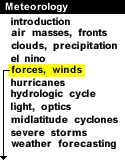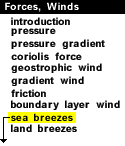
|
Since the pressure at any location is determined by the weight of the air above it, the removal of air from higher levels causes the pressure at levels below to decrease. In the case of a developing sea-breeze circulation, an area of low pressure develops over land at the surface in response to the removal of air at higher levels by offshore flow. Conversely, an area of surface high pressure develops over water in response to the accumulation of air at higher levels.
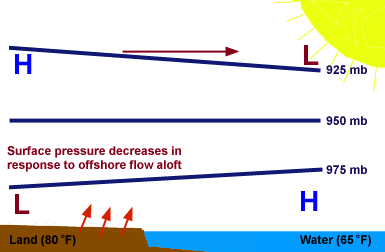
These areas of high and low pressure establish a surface pressure gradient which generates an onshore flow of air at the surface, or sea breeze.
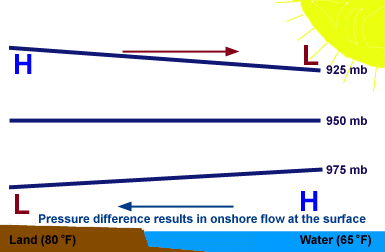
Vertical motions are induced in response to the horizontally moving air. Over land, for example, onshore flow causes air to pile up at lower levels while offshore flow removes air from higher levels. As a result, air rises from lower levels to replace the air that is being removed aloft.
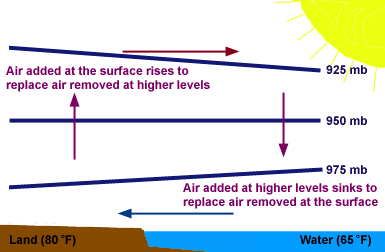
On the other hand, over water, air is accumulating aloft while being removed from lower levels. In response, air descends from higher levels to replace the air that is being removed from lower levels. These rising and sinking motions complete the loop that makes up the sea-breeze circulation.
Sea breeze circulations typically penetrate inland a horizontal distance of less than 40 kilometers from shore. This is due to increased surface friction resulting from the topography of the land. As the distance from shore increases, the sea-breeze circulation weakens and is eventually dampened out by friction.

offshore flow aloft |
|

Land Breezes |


